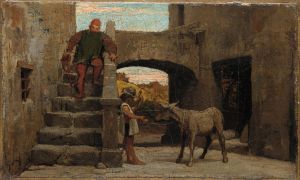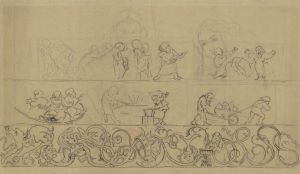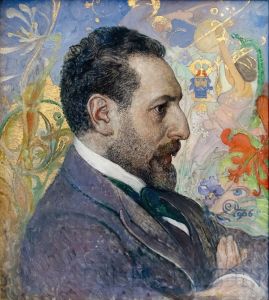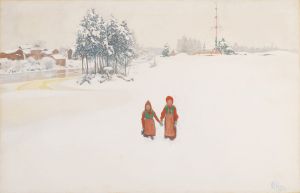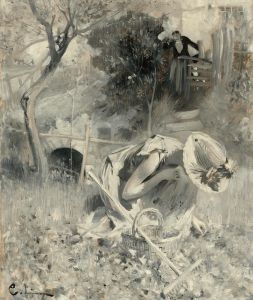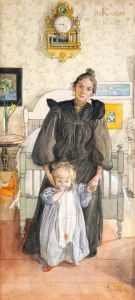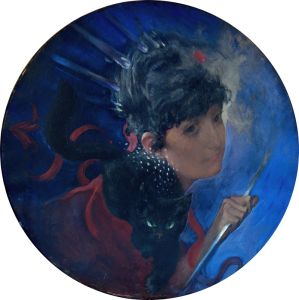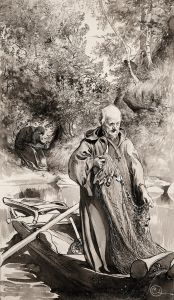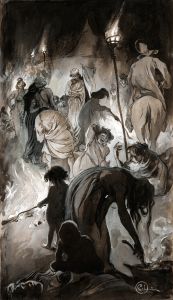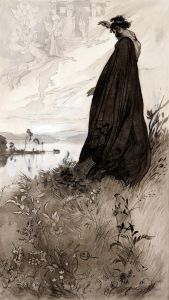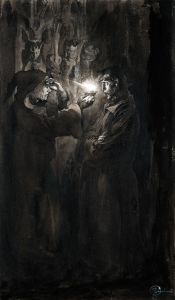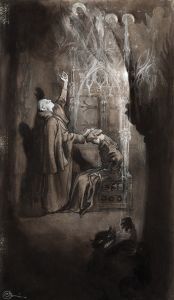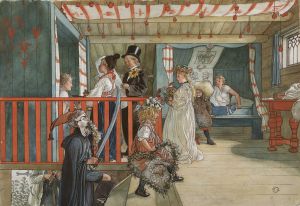
Illustration to ‘Singoalla,The Wind Is My Lover’ by Viktor Rydberg
A hand-painted replica of Carl Larsson’s masterpiece Illustration to ‘Singoalla,The Wind Is My Lover’ by Viktor Rydberg, meticulously crafted by professional artists to capture the true essence of the original. Each piece is created with museum-quality canvas and rare mineral pigments, carefully painted by experienced artists with delicate brushstrokes and rich, layered colors to perfectly recreate the texture of the original artwork. Unlike machine-printed reproductions, this hand-painted version brings the painting to life, infused with the artist’s emotions and skill in every stroke. Whether for personal collection or home decoration, it instantly elevates the artistic atmosphere of any space.
Carl Larsson, a prominent Swedish painter and illustrator, created the artwork titled Illustration to ‘Singoalla, The Wind Is My Lover’ by Viktor Rydberg. This piece was inspired by the novel Singoalla (1857) written by Viktor Rydberg, a renowned Swedish author, poet, and philosopher. The novel is a romantic and tragic tale set in medieval Sweden, exploring themes of love, cultural conflict, and destiny. Larsson's illustration reflects his ability to capture the emotional depth and narrative essence of literary works.
Carl Larsson (1853–1919) was known for his contributions to the Arts and Crafts movement and his distinctive style, which combined elements of realism and romanticism. His illustrations often accompanied literary texts, and he was celebrated for his ability to bring stories to life through his art. In this particular work, Larsson visually interprets a scene or theme from Rydberg's Singoalla, emphasizing the poetic and dramatic qualities of the story.
The title of the illustration, The Wind Is My Lover, suggests a focus on the ethereal and symbolic aspects of the narrative. While specific details about the composition of this artwork are not widely documented, Larsson's works typically feature meticulous attention to detail, a harmonious use of color, and a deep connection to the subject matter. His illustrations often evoke a sense of intimacy and emotional resonance, characteristics that likely apply to this piece as well.
Larsson's collaboration with literary works like Singoalla highlights the intersection of visual art and literature in 19th-century Sweden. Both Larsson and Rydberg were influential figures in Swedish cultural history, and their works continue to be studied and appreciated for their artistic and intellectual contributions.
Further details about the specific context, medium, or reception of this illustration are not readily available in historical records. However, the artwork remains a testament to Larsson's skill as an illustrator and his ability to interpret complex narratives through visual means.





